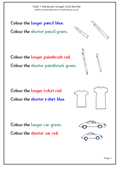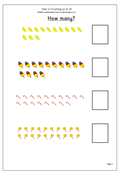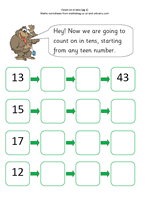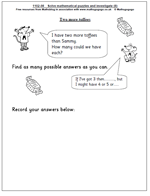Maths worksheet on recognising squares from mathsblog.co.uk
Here is a straightforward maths worksheet on recognising squares. Remember that the square is a special sort of quadrilateral, with all four sides the same length and all four angles are right angles. We normally see squares represented with the sides horizontal and vertical, but it is harder to spot a square when it is tilted, giving it more of a diamond appearance – don’t be fooled as it could well be a square slightly rotated. Very young children may see this as a different shape which brings up the notion that the shape stays the same even if it is rotated.
At this stage, work with shape should be mainly practical using real shapes. Schools will normally be stocked with plastic or similar shapes, both 2-D and 3-D, but parents can quickly and easily make a collection of the most common shapes from empty tins and packets (including those boxes from a popular triangular chocolate bar), and cut 2-D shapes from card.
2-D and 3-D shapes are all around us. Use opportunities to discuss shapes as you come across them in everyday life (clocks, bath plugs, holes in the road, fencing posts, CDs etc).
Free Y1 maths worksheet: recognising squares
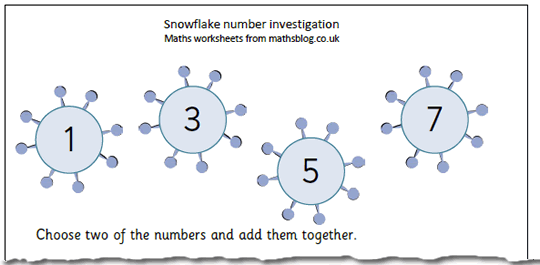 Still chilly outside so a little ‘snowflake’ number investigation suitable for Year 1 children (5-6 yrs old). Given the numbers 1, 3 5 and 7 what addition sums can be made? Encourage working in a logical way.
Still chilly outside so a little ‘snowflake’ number investigation suitable for Year 1 children (5-6 yrs old). Given the numbers 1, 3 5 and 7 what addition sums can be made? Encourage working in a logical way.


